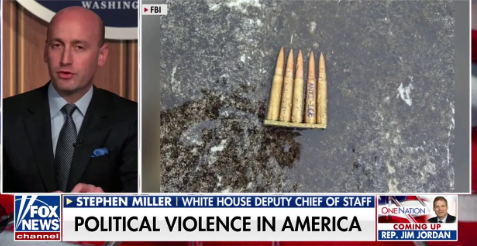 In the intricate tapestry of modern development, mineral rights emerge as pivotal threads, weaving together the fabric of economic progress and environmental stewardship. This article delves into the multifaceted relationship between mineral rights and sustainable development, a liaison critical yet often overlooked in contemporary discourse.
In the intricate tapestry of modern development, mineral rights emerge as pivotal threads, weaving together the fabric of economic progress and environmental stewardship. This article delves into the multifaceted relationship between mineral rights and sustainable development, a liaison critical yet often overlooked in contemporary discourse.
What Are Mineral Rights?
Mineral rights, a distinct legal entity, confer ownership of underground resources such as oil, natural gas, metals, and ores. Unlike surface rights, which pertain to the land’s surface, mineral rights focus on the wealth lying beneath. This bifurcation forms the bedrock of resource management, dictating who can extract these subterranean treasures.
Types of Mineral Rights:
Leasehold Interest
Royalty Interest
Working Interest
How Do Mineral Rights Differ from Land Rights?
The demarcation between land rights and mineral rights is not merely a legal technicality but a cornerstone in resource governance. This distinction becomes increasingly relevant as we navigate the complexities of sustainable development and environmental conservation.
The Role of Mineral Rights in Sustainable Development
Mineral rights, often perceived solely through an economic lens, play a surprisingly significant role in achieving sustainable development goals. These rights, when managed astutely, can catalyze environmental, social, and economic benefits, aligning closely with the United Nations’ Sustainable Development Goals (SDGs).
How Can Mineral Rights Promote Environmental Sustainability?
The intersection of mineral rights and environmental sustainability is a terrain marked by potential and pitfalls. Proper management of these rights can foster responsible resource use, minimize environmental impact, and encourage the adoption of renewable energy sources.
What Is the Economic Impact of Mineral Rights on Sustainable Development?
Economically, mineral rights can be a double-edged sword. On one side, they offer a pathway to prosperity and development; on the other, they pose risks of economic over-dependence and market volatility.
The Balance Between Economic Growth and Environmental Protection
Striking a balance between economic growth and environmental protection under the aegis of mineral rights is akin to walking a tightrope. It demands innovative solutions, stakeholder collaboration, and a commitment to sustainable practices.
Legal and Regulatory Frameworks Governing Mineral Rights
The legal and regulatory landscape governing mineral rights is as complex as it is crucial. These frameworks determine how resources are extracted, who benefits, and how environmental and social impacts are mitigated.
Key Laws and Regulations:
The General Mining Law of 1872 (U.S.)
The Mineral Leasing Act (U.S.)
The Extractive Industries Transparency Initiative (Global)
How Do International Standards Influence Mineral Rights and Sustainability?
International standards and agreements play a pivotal role in shaping national policies on mineral rights. They promote transparency, environmental responsibility, and equitable resource distribution, crucial for sustainable development.
Community Engagement and Mineral Rights
Community engagement in mineral rights is not just a moral imperative but a strategic necessity. Inclusive decision-making processes ensure that the benefits of resource extraction are equitably shared and adverse impacts are minimized.
How Can Communities Benefit from Mineral Extraction?
The potential benefits for communities from mineral extraction span economic opportunities, infrastructure development, and social investments. However, realizing these benefits requires a framework that prioritizes community interests and sustainable practices.
Addressing Community Concerns and Conflicts
Conflict management in the context of mineral rights is a delicate endeavor. It involves addressing community concerns, ensuring fair compensation, and fostering a sense of ownership and partnership among local stakeholders.
Environmental Considerations in Mineral Rights Exploitation
The environmental footprint of mineral extraction is undeniable. From habitat disruption to pollution, the challenges are manifold, necessitating robust mitigation strategies and sustainable extraction methods.
Environmental Risks and Management Practices:
Water Pollution and Management
Land Degradation and Rehabilitation
Air Pollution and Emission Control
How Can Mineral Extraction Be Made More Environmentally Friendly?
Advancements in technology offer promising avenues for making mineral extraction more environmentally friendly. Techniques such as precision mining, waste recycling, and reduced energy consumption are at the forefront of this transformation.
Economic Benefits and Challenges of Mineral Rights
The economic dimension of mineral rights encompasses direct revenue generation, job creation, and broader macroeconomic impacts. However, these benefits often come with challenges such as resource dependency and market fluctuations.
How Do Mineral Rights Affect Local and National Economies?
The ripple effects of mineral rights on local and national economies are profound. They can catalyze regional development, but also lead to disparities and economic imbalances, calling for balanced and equitable policies.
Best Practices for Sustainable Management of Mineral Rights
Sustainable management of mineral rights is not a utopian ideal but a pragmatic approach that encompasses environmental stewardship, social responsibility, and economic viability.
Key Practices and Guidelines:
Community Engagement and Partnership
Environmental Impact Assessments
Fair Revenue Sharing and Transparency
Case Studies: Success Stories in Sustainable Mineral Rights Management
Examining case studies of successful mineral rights management sheds light on practical strategies and lessons learned. These narratives offer invaluable insights for policymakers, industry leaders, and communities.
The Future of Mineral Rights in the Context of Sustainable Development
As we gaze into the future, the role of mineral rights in sustainable development appears increasingly significant. Emerging trends and innovations promise to reshape how we approach and manage these vital resources.
Innovations and Emerging Trends in Mineral Rights Management
Innovations in mineral rights management are set to redefine the landscape of resource extraction. From blockchain for transparency to AI-driven exploration, the future holds exciting prospects.
Conclusion
In conclusion, the journey through the realm of mineral rights and sustainable development reveals a landscape rich with challenges and opportunities. The intricate interplay between economic growth, environmental stewardship, and social equity, governed by a complex tapestry of legal and regulatory frameworks, stands as a testament to the pivotal role of mineral rights in shaping a sustainable future. From the depths of the earth to the heights of policy-making, the management of these rights demands a harmonious balance, ensuring that the bounty of our planet is harnessed not just for the prosperity of today, but for the sustainability of tomorrow.
From a Guest Blogger: How Mineral Rights Relate to Sustainable Development
Renewable Energy
Trump Welcomes Qatar to Build Air Force Base in Idaho
 No one seems to understand Trump’s motivation here. Did it have anything to do with the $400 million gift aircraft?
No one seems to understand Trump’s motivation here. Did it have anything to do with the $400 million gift aircraft?
Does Qatar fear attack from Alberta or Saskatoon?
The Qataris say they need to be prepared to help achieve peace between the Israelis and the Palestinians. I’m suspicious, though I’m no expert in military logistics. We’re talking about a 6000-mile plane ride.
Renewable Energy
Trump’s Avalanche of Lies
 What? I’m confused. “Trump’s Statement” of a few months was that “Gas prices are (present tense) under $2.”
What? I’m confused. “Trump’s Statement” of a few months was that “Gas prices are (present tense) under $2.”
It would have been interesting if one of the gaggle of reporters surrounding him could have asked the obvious question: “That’s great, sir, but can you name a single state in the union whose gas prices are under $2?
It would have been a tense moment, for sure, but don’t we have any self-respect?
Renewable Energy
Where Does Domestic Violence Come From?
 Over the past few months, and especially since the murder of Charlie Kirk, the right-wing news sources are telling us that most of the politically related violence is coming from the left, in particular from the left-wing “terrorist associations,” e.g., Antifa.
Over the past few months, and especially since the murder of Charlie Kirk, the right-wing news sources are telling us that most of the politically related violence is coming from the left, in particular from the left-wing “terrorist associations,” e.g., Antifa.
If you look at some coverage on the subject, however, you’ll learn that this is simple false. Here’s a bit from a PBS piece:
PBS: Policymakers and the public need reliable evidence and actual data to understand the reality of politically motivated violence.
Craig: No, they don’t. Are you serious? Are we to believe that Donald Trump is sending federal troops to democratically-led cities based on “reliable evidence and actual data?” This is a sick joke.
PBS: From our research on extremism, it’s clear that the president’s and Miller’s assertions about political violence from the left are not based on actual facts.
Here’s more from the PBS article:
After the Sept. 10, 2025, assassination of conservative political activist Charlie Kirk, President Donald Trump claimed that radical leftist groups foment political violence in the U.S., and “they should be put in jail.”
“The radical left causes tremendous violence,” he said, asserting that “they seem to do it in a bigger way” than groups on the right.
WATCH: Extremism scholar analyzes influence of rhetoric on political violence
Top presidential adviser Stephen Miller also weighed in after Kirk’s killing, saying that left-wing political organizations constitute “a vast domestic terror movement.”
“We are going to use every resource we have … throughout this government to identify, disrupt, dismantle and destroy these networks and make America safe again,” Miller said.
Political violence rising
The understanding of political violence is complicated by differences in definitions and the recent Department of Justice removal of an important government-sponsored study of domestic terrorists.
Political violence in the U.S. has risen in recent months and takes forms that go unrecognized. During the 2024 election cycle, nearly half of all states reported threats against election workers, including social media death threats, intimidation and doxing.
WATCH: Trump conspiracies inspire threats against judges, jurors and election workers
Kirk’s assassination illustrates the growing threat. The man charged with the murder, Tyler Robinson, allegedly planned the attack in writing and online.
This follows other politically motivated killings, including the June assassination of Democratic Minnesota state Rep. and former House Speaker Melissa Hortman and her husband.
These incidents reflect a normalization of political violence. Threats and violence are increasingly treated as acceptable for achieving political goals, posing serious risks to democracy and society.
-
Climate Change2 years ago
Spanish-language misinformation on renewable energy spreads online, report shows
-
Climate Change2 months ago
Guest post: Why China is still building new coal – and when it might stop
-
Climate Change Videos2 years ago
The toxic gas flares fuelling Nigeria’s climate change – BBC News
-

 Greenhouse Gases1 year ago
Greenhouse Gases1 year ago嘉宾来稿:满足中国增长的用电需求 光伏加储能“比新建煤电更实惠”
-
Greenhouse Gases2 months ago
Guest post: Why China is still building new coal – and when it might stop
-

 Climate Change1 year ago
Climate Change1 year ago嘉宾来稿:满足中国增长的用电需求 光伏加储能“比新建煤电更实惠”
-

 Carbon Footprint2 years ago
Carbon Footprint2 years agoUS SEC’s Climate Disclosure Rules Spur Renewed Interest in Carbon Credits
-
Renewable Energy3 months ago
US Grid Strain, Possible Allete Sale


